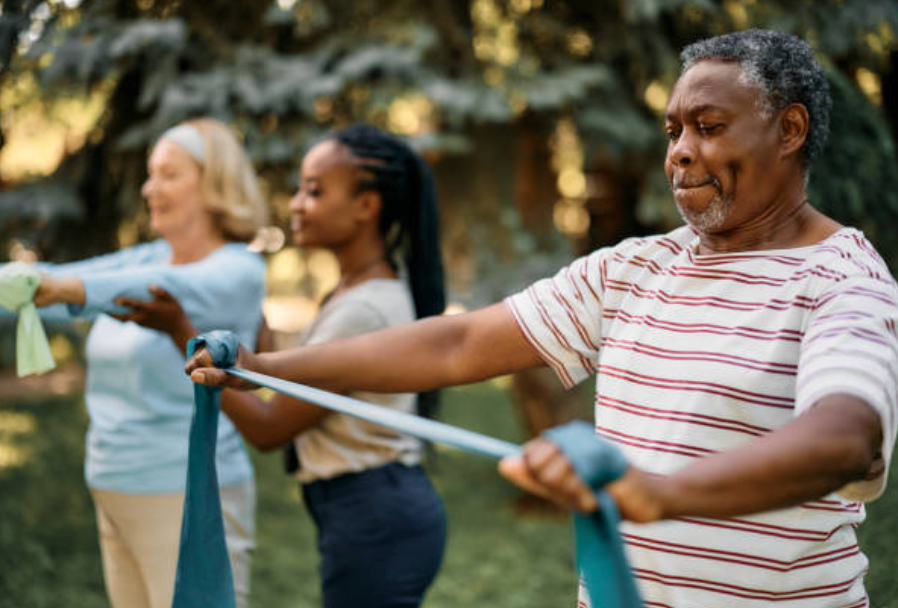Squeezing in time to exercise can be challenging, especially if you juggle a hectic schedule. But staying physically active is one of the most important things you can do for your health as you age.
Given the increasing popularity of 5-minute interval workouts (or High-Intensity Interval Training – HIIT), swapping short bursts of moderately intense and vigorous aerobic exercise followed by short periods of rest might provide an easy solution.
That said, 30-minute workout sessions have been the rule for a long time. So, which is better? Here’s a look at some pros and cons of each.
Remember, Moving at All Is Better Than Sitting Still
Before drawing workout comparisons, remember that doing any kind of movement is better than sitting still. According to the Mayo Clinic, sedentary lifestyles can lead to many health problems, including elevated blood pressure and blood sugar levels, excess body fat, and an increased “risk of death from cardiovascular disease and cancer.”
Conversely, moving more combats these chronic conditions, helps maintain muscle tone, mobility, and mental well-being as you age. A big thing to remember: only move as much as your body can, and then slowly increase duration and repetition as you gain strength and stamina.
Where Do I Start?
Experts suggest that older adults do 150 minutes of moderate-intensity aerobic activity each week – which you can break up into five 30-minute sessions, five days a week, along with two or more days a week for muscle-strengthening activities.
Some moderate-intensity aerobic activities include:
- Brisk walking
- Cycling (outdoors or indoors on a stationary bike)
- Climbing stairs
- Dancing
- Hiking
- Water aerobics
For some muscle-strengthening activities, you can try:
- Lifting weights
- Using resistance bands
- Doing push-ups/squats/sit-ups
Photo: pixelfit via gettyimages.com
Multiple 5-Minute Workouts – Pros and Cons
For the most health benefits, you want to do exercises that get your heart pumping faster and increase your breathing rate. (You might be able to talk, for instance, but not sing while you’re active).
Pros:
- Gets you moving
- Better than not exercising at all
- Requires less time per session, which can encourage more exercise
- Allows you to start small and increase duration over time
- Improves stamina
- Helps improve heart health
- Promotes calorie afterburn
- Boosts energy
Cons:
- HIIT workouts aren’t easy for beginners
- Physical limitations may complicate the types of exercise you do
- If you’re new to exercising, you’ll need to work your intensity level up
- Higher injury risk as your body is moving faster and is under more physical stress
30-Minute Workouts – Pros and Cons
Working out for 30 minutes in one stretch might seem like forever to some. In the traditional plan, you’ll want to do five half-hour sessions each week.
Pros:
- Gets you moving
- Helps improve cardiovascular health
- Improves physical endurance
- Helps promote weight loss
- Promotes better sleep
- More enjoyable than high-intensity effort in a short time (for some)
- Getting in the 30-minute exercise “zone” can help relieve stress
- Carries less risk of injury
- Boosts energy
Cons:
- Longer workouts require more time out of your schedule
- The thought of longer durations might discourage you from exercising
- You might battle burn-out or get bored
- Exercising continuously for 30 minutes several times a week may require equipment
- At the start, you might not have enough stamina to exercise for 30 minutes straight
Overall, these lists are not all-inclusive. The best fitness plan might be doing a mix of short workouts and longer workouts during any given week. Ultimately, exercising regularly, moving more than sitting, and working to the best of your physical ability are what matter most. If you have any questions about what type of workout is best for you, consult your doctor or a certified professional trainer.




